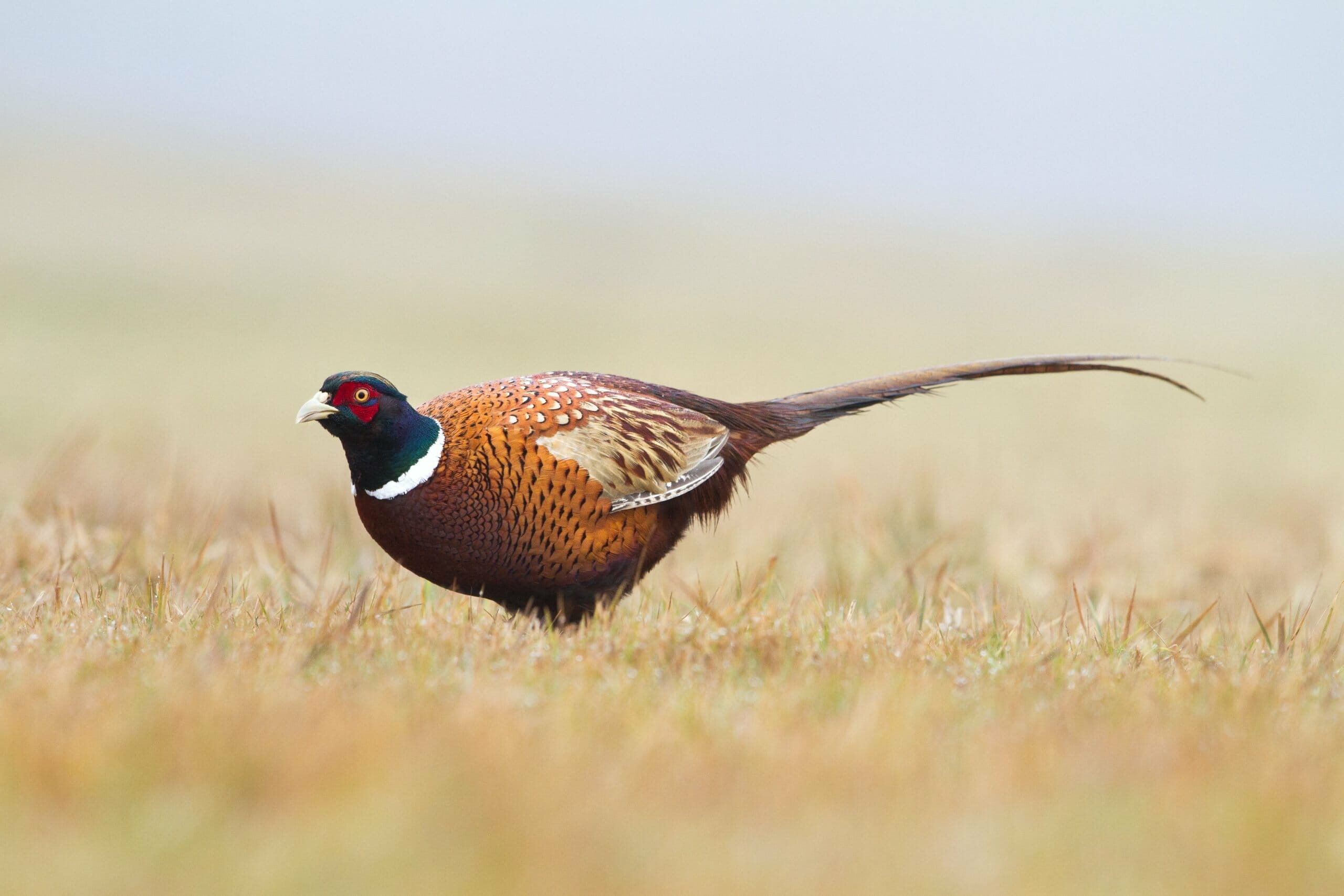So, I’ve been “tagged” on Twitter to post a recipe and pass on the goodness. I really enjoy cooking, but trying to write down a recipe that I like making is tricky. I tend to cook like recipes my Nanny (great-grandmother) handed down: “pinch of salt, splash of oil (pronounced roughly “all”), dash of nutmeg”. I’m also aware that there are many dishes I cook which tend to vary considerably, depending on what I happen to have.
So, since I live in the countryside, wear tweeds and wellies on occasion and own a flat-cap, I’ll have to post a recipe with pheasant!
Now, this isn’t too hard, cause pheasant’s taste wonderful! The only thing to remember when cooking them, is that they’re drier and more flavourful than chicken, so cooking them in ways which drain out juices is generally a poor way to proceed.
The following recipe is less a list of ingredients and well-laid-out cookbook instructions, but more of a narrative. The ingredients you can use vary very widely, and you can even cook it differently if you fancy. The basic idea, tho, is to combine apples and pheasants in a lovely, creamy dish!
Recipe
So, to start, get hold of these ingredients (serves 2-3):
- 1 pheasant (which you can get “in the feather” for less than £2 per brace—that’s two birds—or cleaned for a couple quid)
- 3-5 shallots
- 3 stems of fresh thyme
- 1 large or 2 small cooking apples
- 1 whole head of garlic
- Butter
- Calvados or brandy
- Butter
- Quality, dry cider (or white wine, if you Normandy to Hereford)
- Single Cream
The process
You can proceed in several ways, right from the start. If you want a casserole dish, joint your bird first, and prepare all the ingredients in a casserole dish to bake in the oven. You can also cook it in a heavy, lidded pan on the stove, or in the slow cooker. I tend to leave the bird whole until it falls apart on the plates!
Heat some butter in a heavy, largish pan. Brown your well-seasoned bird, either the jointed chunks or manoeuvring the whole bird so it’s nice and golden. Just before it goes crispy (you’re trying to give it texture and colour, not fry it through) add finely-chopped shallots and garlic. As the onions get soft, slightly lower the heat and add a measure of brandy to flame. The best way is to pour it into a ladle, and warm it as you pour a bit of the brandy over the pheasant then light the liquor—pouring a little more at a time, without letting the flame follow into the ladle. Finally, once the flame goes out, chuck in some freshly-torn thyme and allow that to pop and fry for a minute or so.
Put the meat and onions into your casserole dish or slow-cooker,and de-glaze the pan with a little bit more brandy, pouring all the cooking juices back over the pheasant. Add the chunky, sliced apple to the dish, and pour in some cider or white wine. I don’t give measures here, because it’s entirely up to you. If you want it to be a bit more stew-like, use more liquids, even adding some good poultry stock. Likewise, you can reduce it a bit more for a richer flavour.
Now cover and let it cook slowly. If you’re doing it in the oven, it should take about an hour in a medium-hot oven. If you’re slow-cooking, it can take as long as you want beyond about 2 hours. Make sure, if you’ve gone for the slightly drier method, to baste the bird now and then, or add a knob of butter to the top to keep it nice and juicy.
When it’s all cooked, remove the whole bird (if you’re using it jointed, ignore that) to rest. Stir in your single cream, and let it warm through. Now, I depart with tradition here even further by not reducing everything down and blending all the apple/onions to a pureed oblivion. I simply halve the bird and serve with some roasted potatoes and seasonal veggies (also great on champ or mash!) and splash the juice and onions/apples alll over.
Drink: although this is a poultry dish, it will always be served in autumn or winter (pheasant season runs from September to February), so I tend to shy away from white wine. Also, pheasant is game, and has a richer flavour than most poultry people tend to eat, so I like this with a warming winter wine… maybe pinot noir? I’ve had it with pinotage and cabernet sauvignon (not mixed, but on two separate occasions) and it was rather nice.
The idea is to get all the flavour out of the pheasant without letting it dry out. This dish can be changed to be more like a stew with the addition of a flour roux and a bit more stock, or it can be reduced down to a lovely rich drizzle for a more fine-dining approach.
Photo by Jack Seeds on Unsplash
